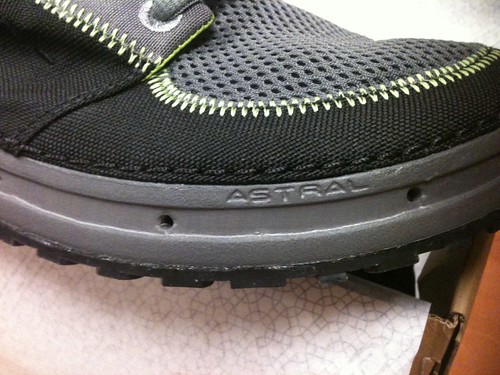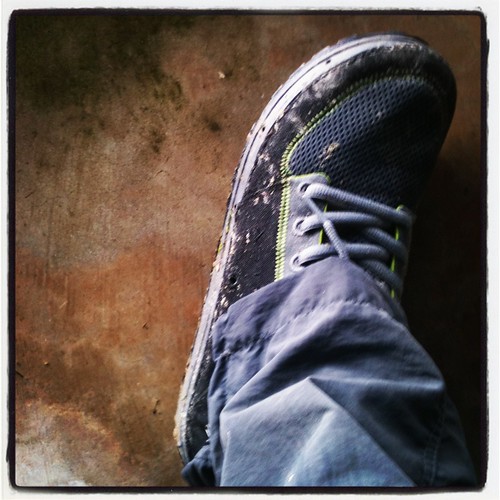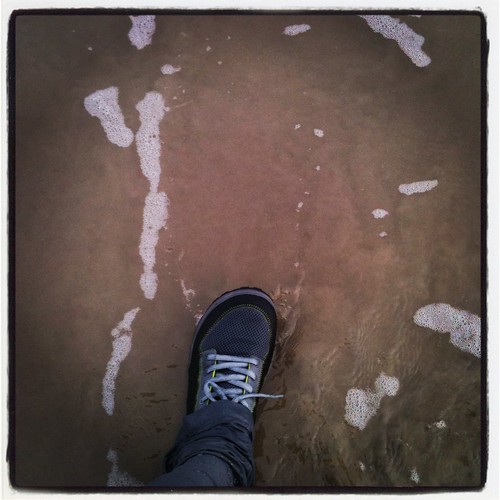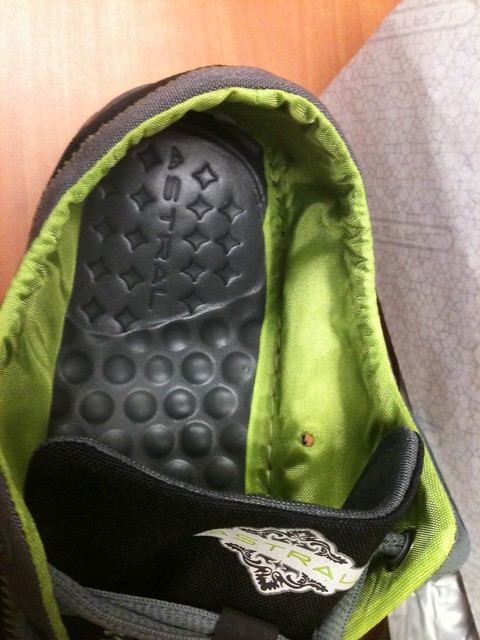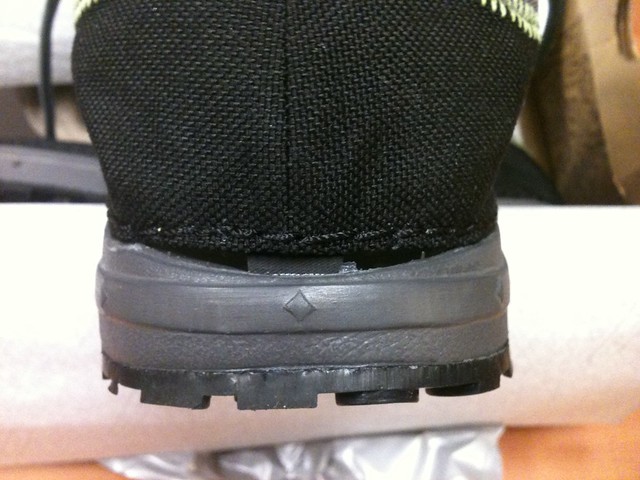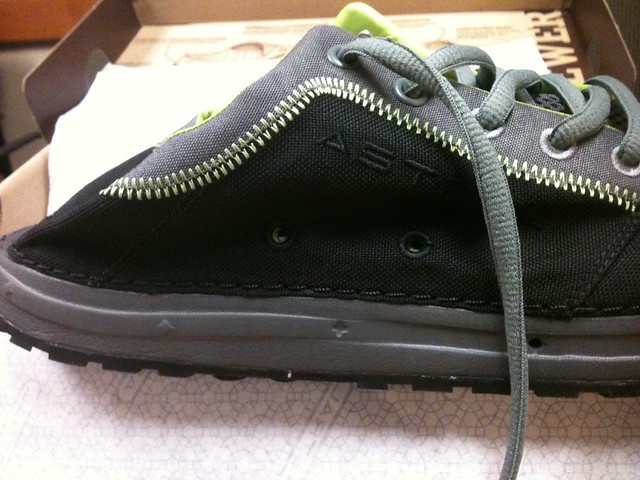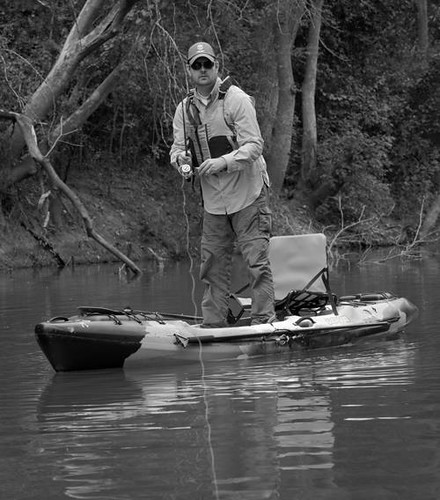 This weekend I was able to buy my first Jackson Kayak. I chose the Coosa, an 11'2" river kayak that was designed for river running, rapid shredding, stand up fishing and all around versatility. It was new to me but had been fished some before. It's been quite a while since I have purchased a boat that wasn't used. Fishing mojo is transferable you know.
This weekend I was able to buy my first Jackson Kayak. I chose the Coosa, an 11'2" river kayak that was designed for river running, rapid shredding, stand up fishing and all around versatility. It was new to me but had been fished some before. It's been quite a while since I have purchased a boat that wasn't used. Fishing mojo is transferable you know.Sunday I had the opportunity to scout a stretch of river that has had little to no activity from humans for the better part of 40 years. There is a project I am working with that is looking to make this land a public access take in/out for kayaking on the river. I'll have more on that later in the month but I wanted to set the scene of how special this outing was for me. Sunday was the first day in a new boat on a virtually untouched river. My Coosa was the first kayak in that river in a very long time or possibly ever. It is really hard to tell but it was special either way. I learned a lot about the boat, the river and myself. The latter two will have to wait a bit. Today I want to talk about the Coosa.
I have spent the better part of a year reading about different kayaks. I owned two already but knew I wanted to upgrade. In September I fished a kayak bass tournament on Purtis and saw what I wanted. I fished around a Coosa a good part of the day that a friend named Chris owned. He was seeing things I couldn't see and fishing standing up, sitting down, sitting elevated. After that weekend I started reading everything I could on the Coosa. Many folks encouraged me to also look at the Cuda, which I did, in both 12 and 14' models but the Coosa just fit what I needed. I had several offers to test boats out and just couldn't make the connections work out; (it flash flooded for the three days I had available). I watched all the videos, asked tons of questions from Jackson team members, Jackson owners not affiliated with the brand and to the general internet audience. I received dozens and dozens of answers, questions and thoughts. I found a good deal from a friend on one of the forums I frequent and we set up a meet. I bought the boat and headed home, breaking all my own rules and unloaded a kayak I had never sat in, paddled or fished from. I had never even been in the brand much less the model. It was scary but I had to trust my research.
Sunday came and in true river runner fashion I dragged my kayak through the overgrowth down to the edge of the water. It was clear immediately why the replaceable keel guard was so important. The water had a lip to it and in 50 degree air temps I didn't want to get wet so I put the boat in the water parallel to the bank, with the Elite Seat in the high position and made my move. With a swift move I was in the seat and on the river. I paddled around like a puppy the first time they see water just to test out how it handled. It was amazing. I could 180 with a single paddle stroke. The "tippy" feeling I had heard so much about in the high position was so much of a non-factor I chuckled a bit. I didn't see what the issue was. I suppose it is a balance thing for most folks and understanding the core and the center line balance but after having a 14' Heritage kayak that was only 26" wide, this thing was a surf board. It just felt right.
 I could instantly see more than my counterparts who were now in the river. I would point at an underwater landmark and they couldn't see it. At this point, I needed to try "it", a selling point for Jackson Coosa: almost everyone can stand. I have seen this done. I just had to get up the courage. I pulled on the strap and there I was, towering more than six feet above the water looking down on fish like a hawk in the sky. The feeling quickly turned serious as I realized I didn't yet have my sea legs. I was wobbly. Think brand new baby horse, or giraffe. I kept my balance but there was some wobble. I wasn't trusting my feet and I later learned they weren't in a good spot. When I widened them out to the edges and rested my heels against the low position molding I gained a significantly more stable posture. With the excitement just beginning I sat back down and started paddling up this peaceful, resting river. I fished, I paddled and took in the views. I wanted to try different things.
I could instantly see more than my counterparts who were now in the river. I would point at an underwater landmark and they couldn't see it. At this point, I needed to try "it", a selling point for Jackson Coosa: almost everyone can stand. I have seen this done. I just had to get up the courage. I pulled on the strap and there I was, towering more than six feet above the water looking down on fish like a hawk in the sky. The feeling quickly turned serious as I realized I didn't yet have my sea legs. I was wobbly. Think brand new baby horse, or giraffe. I kept my balance but there was some wobble. I wasn't trusting my feet and I later learned they weren't in a good spot. When I widened them out to the edges and rested my heels against the low position molding I gained a significantly more stable posture. With the excitement just beginning I sat back down and started paddling up this peaceful, resting river. I fished, I paddled and took in the views. I wanted to try different things.The things I noticed that hadn't been talked about were evident quickly.
The Coosa is a shallow drafting boat. I was skimming over water 5" deep with no issues. The kayaks that were with me, a Hobie Outback and Heritage Redfish had a little more trouble. I was also the heaviest of the people on the trip.
The turning ability had been talked about but the ability to hard stroke once and 180 was not talked about much. My guess is this is a more advanced paddling technique or strength issue or some sort to where this is not a-typical but not typical either. Regardless, I loved it.
All of the videos I remember seeing that talked about rod stagers showed casting rods, not spinning. Spinning rods don't fit well in the rod stagers or the rod rest on the sides. I had to flip the reel skyward to secure it down on the side and the downward facing eyes on a spinning rod don't sit on the v style stagers. A groove in front of the stagers could accommodate those of us who like spinning gear on the river. It would cradle one of the eyes on the rod and keep it from sliding everywhere. I have seen another fix for this but it means hauling extra gear. I don't want to do that.
Storage was a huge surprise. The Coosa has vast caverns inside of it just begging for a camping trip. When I opened the hatches I felt like I could keep a dog or a cat in there it was so big. As I am rigging the boat out, the reach toward the back will be so much easier. It resembles a cargo plane on the water. I love that.
The handles were also nice. They are wrapped in a fabric cover but underneath is a very hard handle, great for getting the boat up a hill or onto the car. I appreciated the rigidity at it didn't fail when I needed it.
All in all, the Jackson Coosa exceeded my expectations. That is saying a lot. I can't wait to get to paddle it again this weekend and more next week. Hopefully soon, we'll be able to have everyone down to discover this river with me and see what beauty a virtually untouched river can hold.

